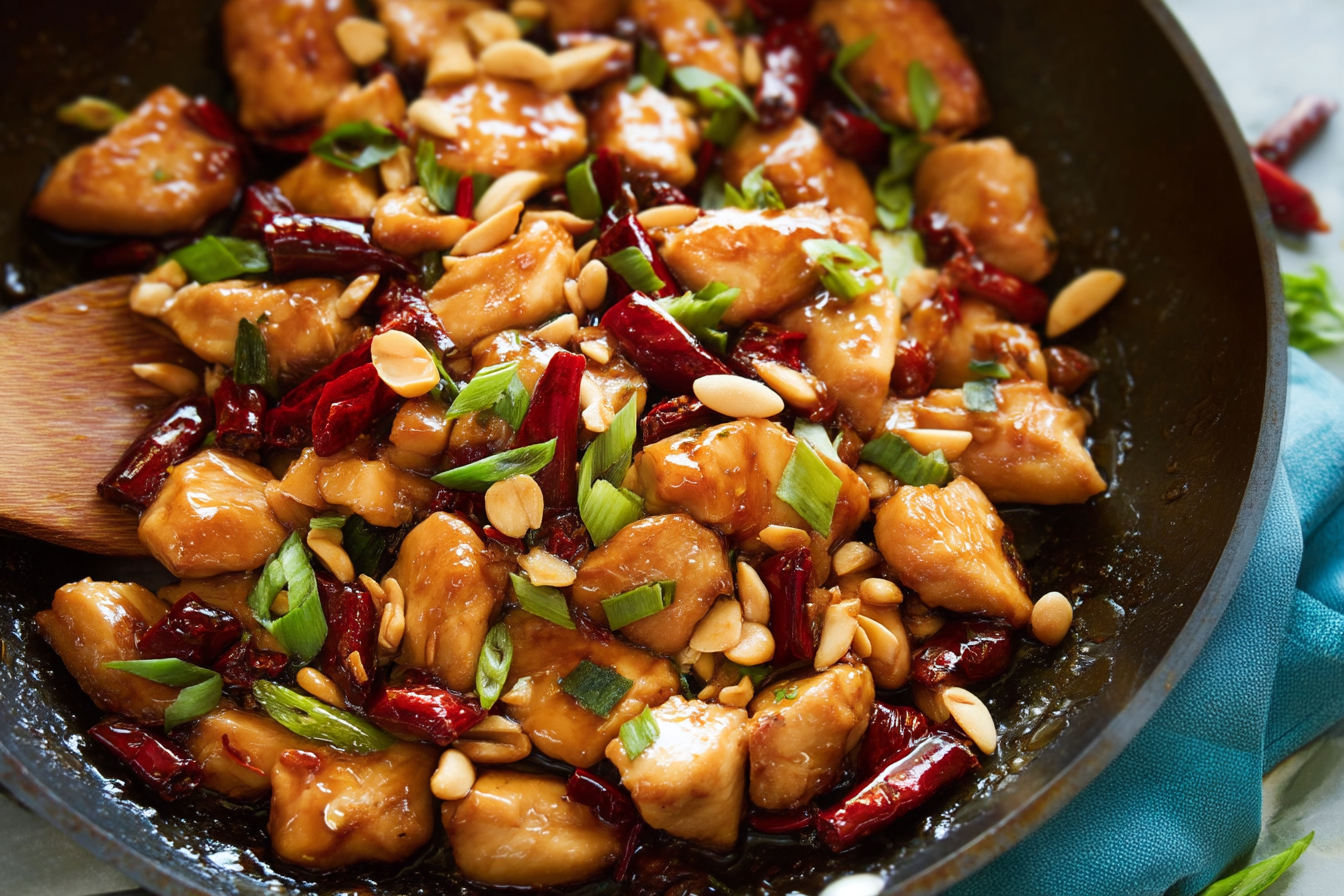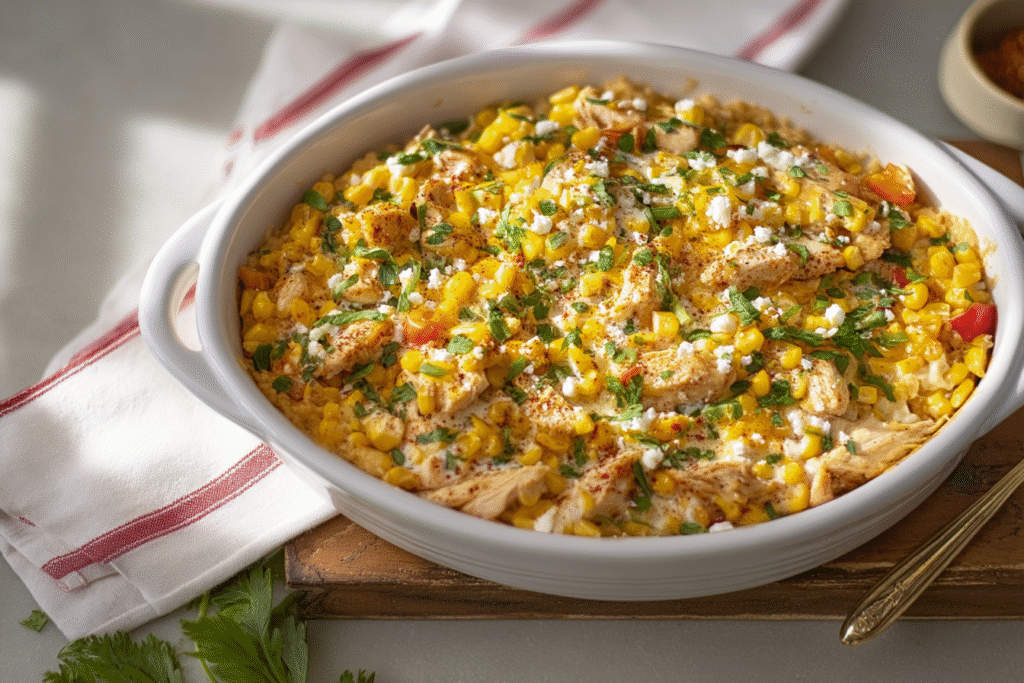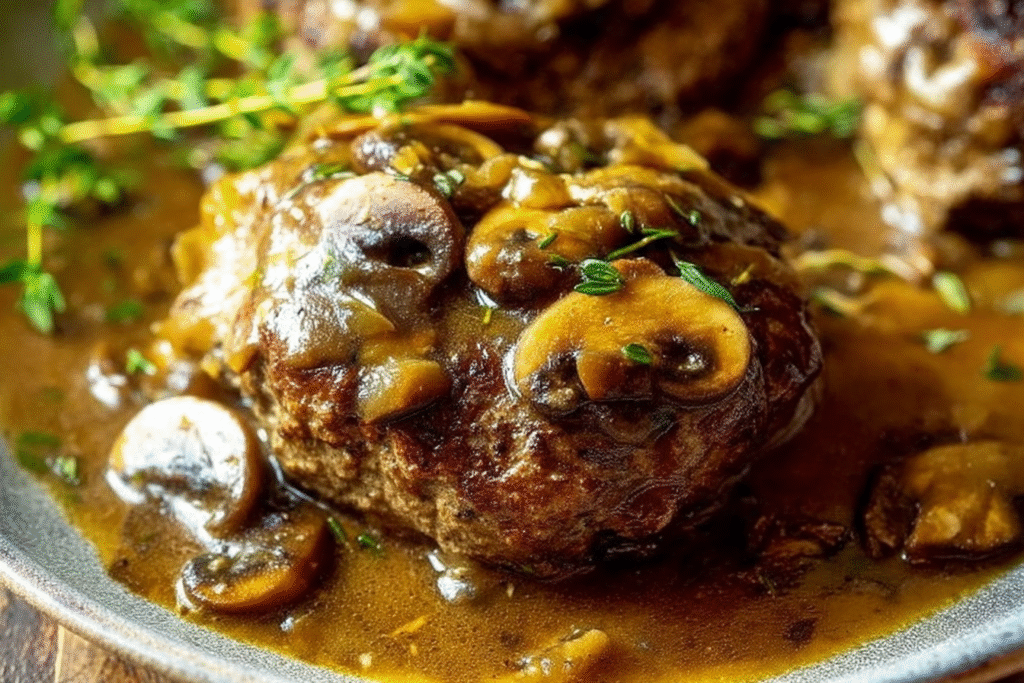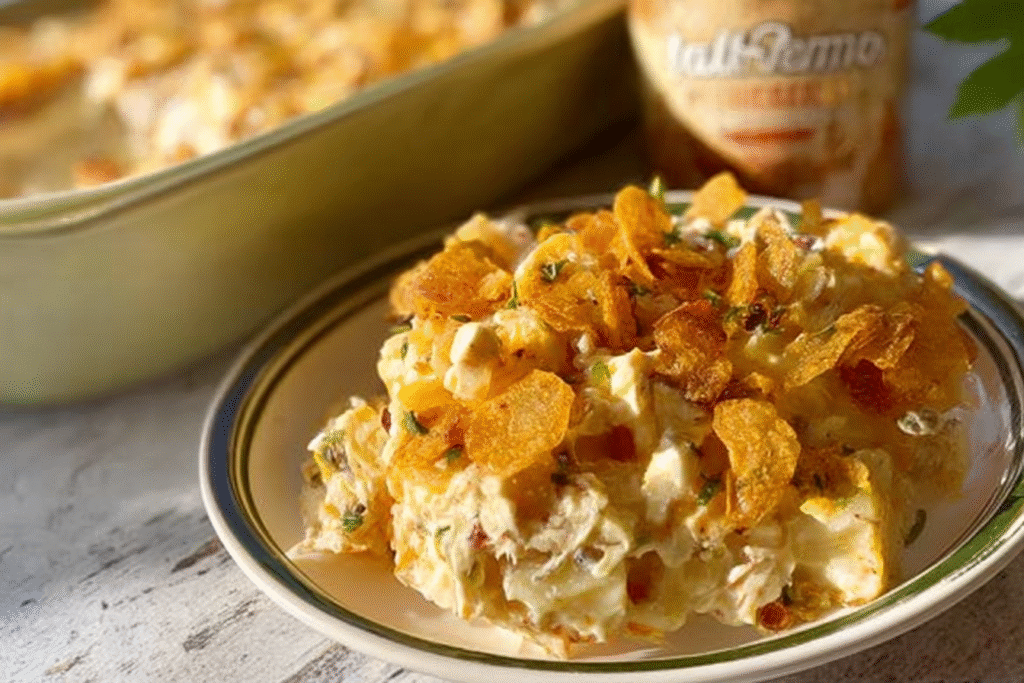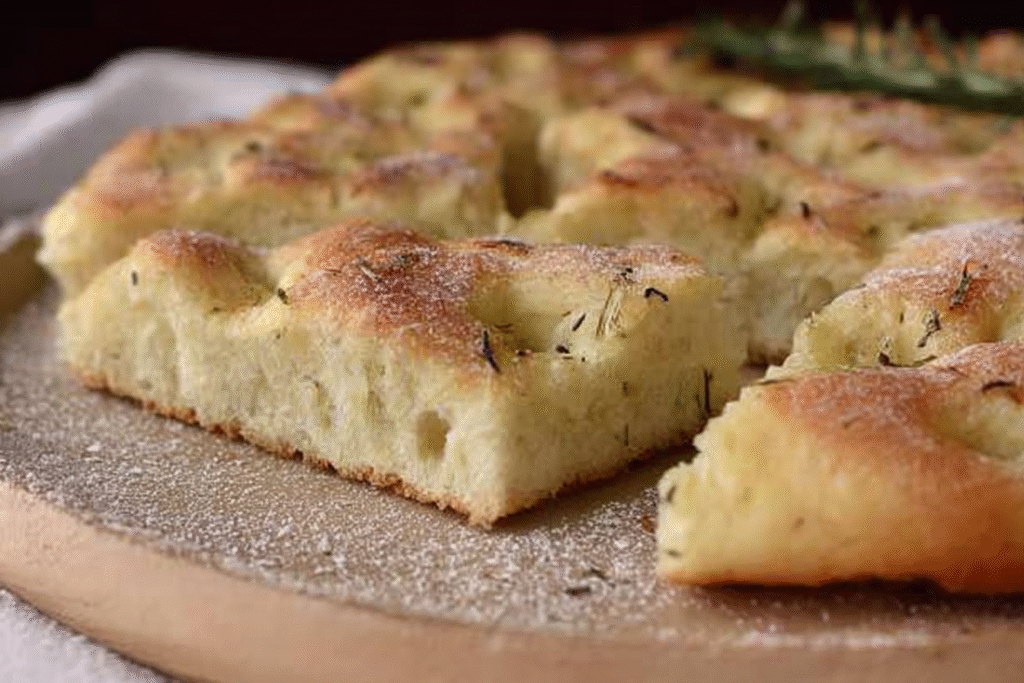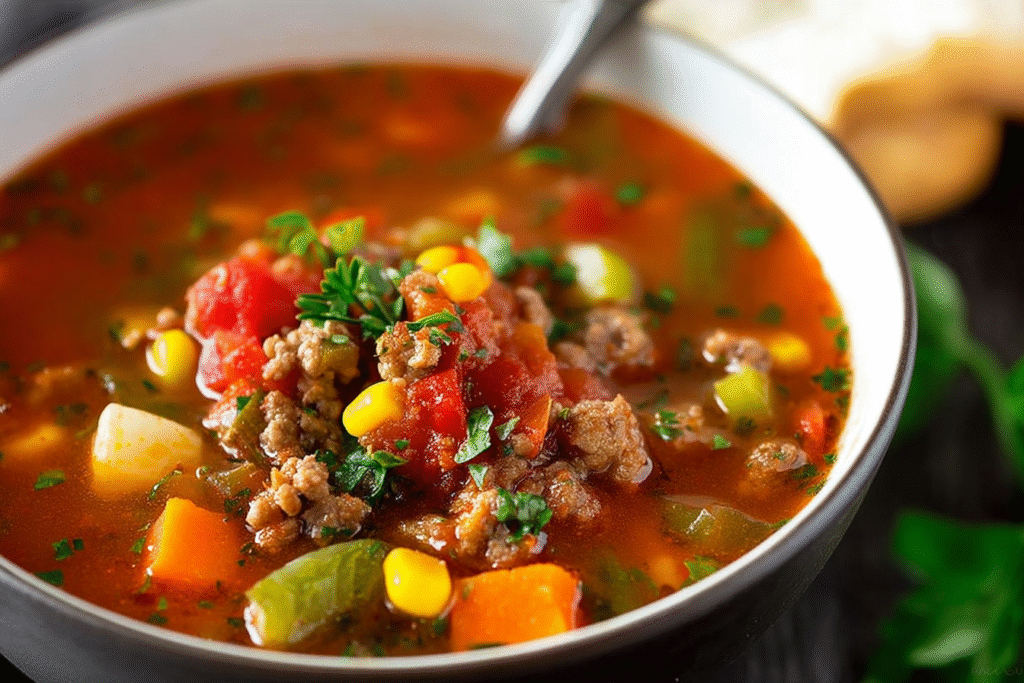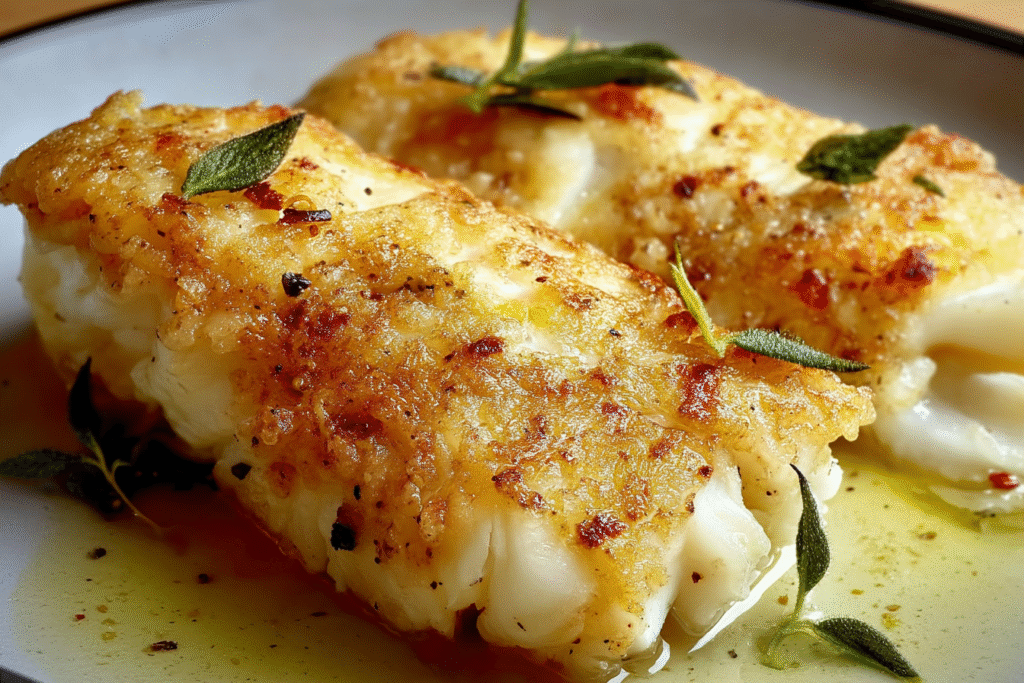Craving a dish that’s both spicy and savory, with a hint of sweetness and crunch? Look no further than Kung Pao Chicken! This classic Chinese stir-fry combines tender chicken, bold spices, and crunchy peanuts, all tossed in a tangy, savory sauce. It’s one of those dishes that’s absolutely bursting with flavor and will have your taste buds dancing. Whether you’re serving it over rice for a weeknight dinner or impressing friends at your next gathering, Kung Pao Chicken is sure to be a crowd-pleaser.
What makes this dish even better is how customizable it is. Love a little extra heat? Add more chili peppers. Prefer a sweeter sauce? Adjust the sugar to your liking. With a perfect balance of salty, sweet, spicy, and savory, this dish has all the flavor elements you could want in a stir-fry.
In this post, I’ll walk you through everything you need to know to make Kung Pao Chicken right at home. From the essential ingredients to step-by-step instructions, I’ve got you covered. Let’s get cooking!
Why You’ll Love This Kung Pao Chicken
Here’s why Kung Pao Chicken is so irresistible:
- Bold and Flavorful – The combination of soy sauce, rice vinegar, hoisin sauce, and chili peppers creates a deep, umami-packed flavor profile with just the right amount of kick.
- Perfectly Balanced – Between the savory chicken, spicy heat, and crunchy peanuts, this dish has an amazing mix of textures and flavors that hit every note.
- Quick and Easy – This stir-fry comes together in under 30 minutes, making it perfect for busy weeknights or last-minute cravings.
- Healthy-ish – Packed with lean chicken, veggies, and peanuts, Kung Pao Chicken can be a healthier alternative to takeout, especially when you control the ingredients.
- Customizable Heat Level – Want it hotter? Add more dried chili peppers. Not a fan of spice? You can adjust the heat to suit your tastes.
- One-Pan Wonder – Everything is cooked in one skillet, which means less cleanup and more time to enjoy your meal.
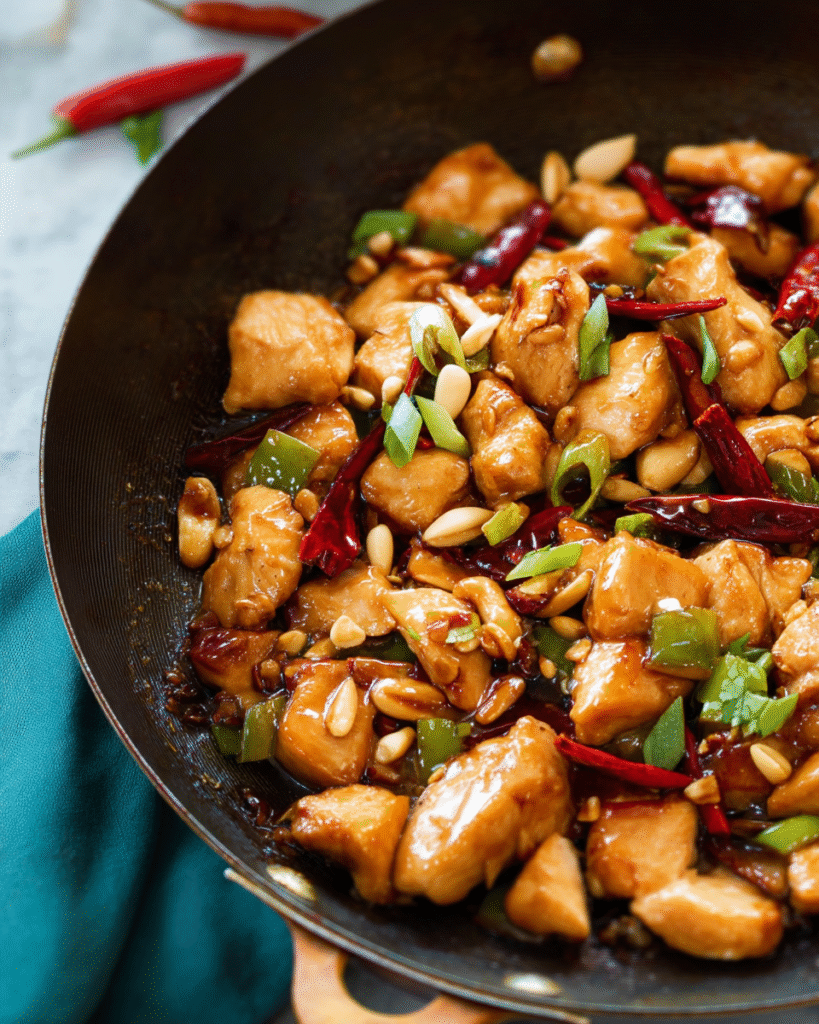
Ingredients You’ll Need
Here’s everything you need to make Kung Pao Chicken. Most of these ingredients are pantry staples, but some might be specific to Asian cuisine. If you’re missing anything, don’t worry! Many grocery stores have an international aisle, and Asian markets are the best places to find specialized ingredients.
- Chicken breasts or thighs – Boneless, skinless chicken breasts or thighs are best for this dish. Chicken thighs tend to stay juicier, but chicken breasts work just as well.
- Soy sauce – For saltiness and depth of flavor.
- Rice vinegar – Adds a touch of tang and balances out the sweetness in the sauce.
- Hoisin sauce – This sweet, savory sauce is a staple in Chinese cooking and brings richness to the dish.
- Cornstarch – Used to coat the chicken before frying to help it crisp up and absorb the sauce better.
- Dried red chilies – These give the dish its signature spice. You can control how much heat you want based on the number of dried chilies you add.
- Peanuts – Traditional Kung Pao Chicken wouldn’t be the same without the crunch of roasted peanuts.
- Garlic and ginger – Fresh garlic and ginger add fragrance and depth to the sauce.
- Green onions – For garnish and a fresh bite to complement the dish.
- Vegetable oil – For cooking the chicken and stir-frying the ingredients.
- Bell peppers and onions – These vegetables are often added for color and crunch, but feel free to add any veggies you like.
- Sugar – A little bit of sugar balances the heat from the chilies and the saltiness of the soy sauce.
(Note: A complete list of ingredients with exact measurements is included in the instructions section below.)
How to Make Kung Pao Chicken (Step-by-Step)
Making Kung Pao Chicken is simpler than you might think. Let’s walk through the process step-by-step so you can get this flavorful stir-fry on your table in no time.
Step 1: Prepare the Chicken
Start by cutting your chicken breasts or thighs into bite-sized cubes. This will help the chicken cook quickly and evenly. In a small bowl, toss the chicken pieces with a tablespoon of cornstarch. This will give the chicken a light crispy coating when fried.
Step 2: Make the Sauce
In a separate bowl, combine 1/4 cup soy sauce, 2 tablespoons rice vinegar, 1 tablespoon hoisin sauce, and 1 tablespoon sugar. Stir to dissolve the sugar and set the sauce aside. This sauce is the flavor base for your Kung Pao Chicken, so don’t skip it!
Step 3: Stir-Fry the Chicken
Heat 1-2 tablespoons of vegetable oil in a large skillet or wok over medium-high heat. Once the oil is hot, add the chicken in a single layer. Let it sear without moving it around for about 2-3 minutes, until it starts to turn golden brown. Flip the chicken pieces and cook for another 2-3 minutes until the chicken is fully cooked through. Remove the chicken from the skillet and set it aside.
Step 4: Stir-Fry the Veggies and Aromatics
In the same skillet, add a little more oil if needed. Add the dried red chilies, garlic, and ginger to the skillet. Stir-fry for about 30 seconds until fragrant—be careful not to burn the garlic! Then, add the chopped bell peppers and onions. Cook for about 3-4 minutes until the vegetables are tender but still crisp.
Step 5: Combine Everything
Return the cooked chicken to the skillet with the vegetables. Pour in the prepared sauce and toss everything to coat evenly. Allow the sauce to cook for another 2-3 minutes, letting it thicken and coat the chicken and veggies.
Step 6: Add the Peanuts
Finally, stir in a generous handful of roasted peanuts. These will add the signature crunch to your Kung Pao Chicken. Give everything a good mix so the peanuts are evenly distributed throughout.
Step 7: Garnish and Serve
Once everything is cooked and the sauce is thickened, garnish your Kung Pao Chicken with sliced green onions. Serve the dish over steamed rice or noodles to soak up all that flavorful sauce.
Helpful Tips for Perfect Kung Pao Chicken
- Adjust the heat – The dried red chilies give the dish its spice, but the heat level can be easily adjusted. Start with fewer chilies if you’re sensitive to spice, or add extra chilies if you love a fiery kick.
- Use high heat – Stir-frying works best over high heat, so make sure your skillet is nice and hot before you start cooking. This will help achieve that slightly crispy texture on the chicken and veggies.
- Don’t overcook the chicken – Chicken can dry out quickly if overcooked, so keep an eye on it. Once it’s golden brown and cooked through, remove it from the skillet to prevent it from becoming tough.
- Add extra veggies – Feel free to mix in additional vegetables like zucchini, carrots, or mushrooms to add more color and nutrition to your dish.
- Make it gluten-free – To make this dish gluten-free, use tamari or coconut aminos instead of soy sauce and double-check your hoisin sauce for gluten.
Frequently Asked Questions (FAQs)
Can I make Kung Pao Chicken ahead of time?
While Kung Pao Chicken is best enjoyed fresh, you can make it ahead and store it in an airtight container in the fridge for up to 3 days. When you’re ready to eat, just reheat it in a skillet over medium heat.
Can I use boneless skinless chicken thighs?
Absolutely! In fact, chicken thighs are a great choice for Kung Pao Chicken because they stay juicy and tender even after stir-frying. You can use breasts or thighs depending on your preference.
Can I make Kung Pao Chicken without peanuts?
While peanuts are a key ingredient in Kung Pao Chicken, you can leave them out if you have a peanut allergy or simply don’t enjoy them. Cashews or almonds could also be a tasty substitute.
Can I use frozen chicken for this recipe?
Fresh chicken works best for stir-frying, but if you only have frozen chicken, make sure to thaw it thoroughly before using it in the recipe.
Kung Pao Chicken is the perfect combination of spicy, savory, and sweet. It’s a dish that’s easy to make, customizable, and packed with flavor. Whether you’re craving something a little exotic for dinner or need a quick weeknight meal, this stir-fry is a great choice. Give it a try, and let me know how it turns out—I’d love to hear what you think! Enjoy!
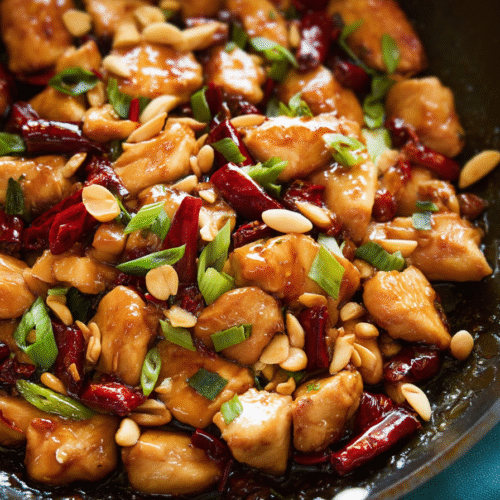
Kung Pao Chicken: A Flavor-Packed Stir-Fry You’ll Love
Ingredients
- 1 lb boneless skinless chicken breasts, cut into bite-sized pieces
- 2 tablespoons vegetable oil for stir-frying
- 1 red bell pepper diced
- ½ onion diced
- 2 garlic cloves minced
- 1- inch piece of ginger minced
- ¼ cup unsalted roasted peanuts
- 1-2 dried red chilies optional, for spice
- 1 tablespoon sesame oil for finishing
- For the sauce:
- 3 tablespoons soy sauce
- 1 tablespoon rice vinegar
- 1 tablespoon hoisin sauce
- 1 tablespoon brown sugar
- 1 teaspoon cornstarch to thicken
- 1 teaspoon Sriracha sauce optional, for extra heat
- 2 tablespoons water
Instructions
- Prepare the sauce:
- In a small bowl, whisk together soy sauce, rice vinegar, hoisin sauce, brown sugar, cornstarch, Sriracha (if using), and water. Set aside.
- Cook the chicken:
- Heat 1 tablespoon of vegetable oil in a large skillet or wok over medium-high heat. Add the chicken pieces and cook for 5-6 minutes, or until golden brown and cooked through. Remove the chicken from the skillet and set aside.
- Stir-fry the vegetables:
- In the same skillet, add the remaining tablespoon of vegetable oil. Add the diced red bell pepper, onion, garlic, and ginger. Stir-fry for 2-3 minutes, until the vegetables are tender and fragrant.
- Combine the chicken and sauce:
- Return the cooked chicken to the skillet. Add the prepared sauce and stir well to coat the chicken and vegetables. Cook for an additional 1-2 minutes, until the sauce has thickened and the chicken is well coated.
- Add peanuts and finalize:
- Stir in the roasted peanuts and dried chilies (if using). Drizzle the sesame oil over the top for extra flavor and stir to combine.
- Serve:
- Serve the Kung Pao Chicken over steamed rice and enjoy!
Notes
- If you prefer a milder version, you can omit the dried chilies or reduce the amount of Sriracha in the sauce.
- For a gluten-free version, use tamari or gluten-free soy sauce.
- You can substitute the chicken with shrimp or tofu for a different protein.
- If you like a bit more crunch, add extra peanuts just before serving.

